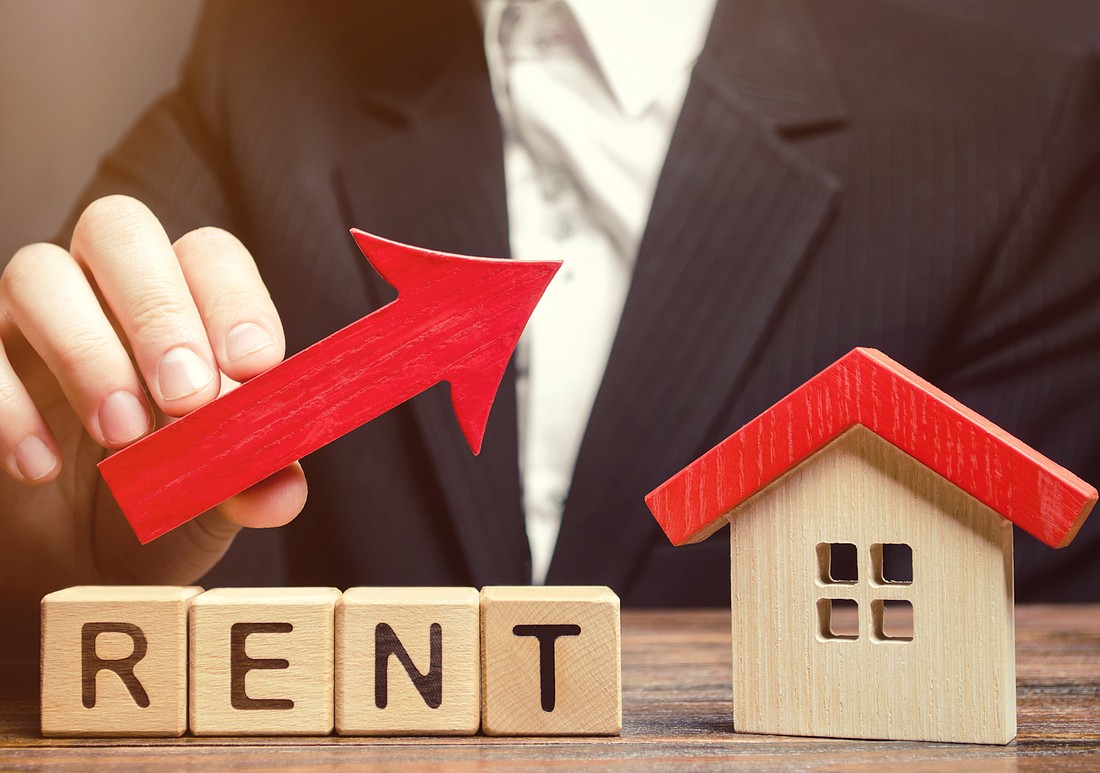
It is widely reported that rents are becoming unaffordable for many area tenants.
Renters are asking landlords how much rates will rise when leases expire in the coming months.
Research by Stessa.com., a landlord rental property tool website, found the Jacksonville market ranks fifth in median rent increases among major cities.
Between 2019 and 2022, monthly median rents have risen $255 to $1,414, a 22% increase over the median 2019 rent of $1,159.
It’s a national trend.
Rent.com found that vacancies across the country are at a 37-year low, leading to a 22.2% year-to-year increase in the cost of renting a one-bedroom apartment.
Online rent calculators show how much a household can afford.
Rentcafe.com calculates affordability based on rent being 30% of monthly income. It asks about monthly income, debt, savings and expenses, as well as a ZIP code.
U.S. census information shows Duval County’s median household income is $56,769. Using conservative debt and expenses numbers, that median household could afford a monthly rent of less than $1,500 per month.
Redfin.com, a real estate app, found only 17 two-bedroom apartments at monthly rents of $1,000 to $1,500 in the Jacksonville market.
Landlords say rent increases are based on supply and demand.
A recent Rent.com report listed reasons for the increases.
The tight housing market is keeping would-be buyers from leaving apartments. Those ready to buy are finding few houses in their price range. Increasing interest rates, still in the 5% range, are limiting affordability for first-time buyers.
A Freddie Mac report found that in 2020 there was a national housing deficit of 3.8 million units. Freddie Mac, the Federal Home Loan Mortgage Corp., is chartered by Congress to provide liquidity, stability and affordability to the U.S. housing market.
Rent increases also influence the movement of renters in the Northeast and West to less expensive states in the South.
Rent.com found that many of those that can are returning to larger cities only to find that rents there also have increased. Those wanting to return no longer can afford to move back and are staying in their new locales.
Another reason for increases comes from rent relief during the pandemic.
At the start of the coronavirus outbreak in March 2020, renters found relief in the federal eviction moratorium.
Second-quarter 2020 rent prices for one-bedroom apartments nationally fell 0.17%.
Through the middle of 2020 rent increases were modest at less than 2% and then fell back by the end of the year.
After April 2021’s 1.35% increase, rates escalated quickly, hitting a double-digit rise of 10.54% in September 2021.
By February 2022, the national average cost of renting a one-bedroom apartment was $1,756, up 16.09% compared with the average rate in February 2021.
Now that the federal eviction moratorium was lifted in fall 2021, landlords are raising rents to make up lost income.
Increasing supply is not easy, however. The cost of new construction is higher and supply-chain snags lengthen the time it takes.
Finding sites also is challenging. Single-family homeowners oppose apartments near their neighborhoods, pushing construction toward major thoroughfares like Butler Boulevard, Interstate 295 and Florida 9B.
City Land Use and Zoning meetings can lengthen the time for approvals, and public comment regularly includes protests about expected traffic increases.
Industry analysts predict rent increases will slow this year, but already have set a new and higher rental benchmark in nearly every market.